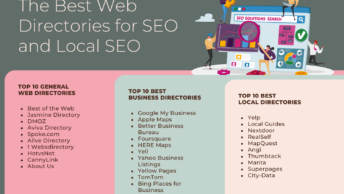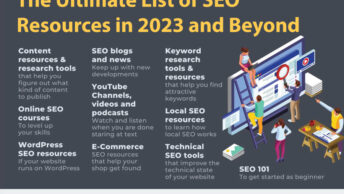There are two aspects that come up in the discussion of building your brand and personal credibility and authority. There are actually many different strategies that may be employed to do this, but we are going to discuss two of them here.
The first aspect is validating your product or service. The second aspect is building up the brand authority and demonstrating that you and your brand are the “go to” place or person for that product or service. In other words, that you and your brand are the authority.
These two aspects go hand in hand. The easiest part is demonstrating a need. The more tricky part is demonstrating that your product or service is the best solution for that need and should be purchased. This goes hand-in-hand with building brand authority, which happens after (or at the same time) as building brand awareness.
Building Brand Awareness
Building brand awareness takes time, but it is doable. This is the phase where you are getting your name out there. Get your brand out there. Be sure to use images and consistent branding to help build that awareness. Consistency is also key.
You will want to appear on podcasts, video interviews, articles, social media platforms, etc. The platforms depend on what you brand is offering. This is where your overall marketing strategy comes into play. Defining that strategy goes beyond the scope of this article, but the idea is that you are getting your name out there! See the section, below, on building brand authority, for more ideas that will help in building awareness.
Defining Customer Need
As far as validation of the need for the particular service you offer, one idea is to offer an “expert quote.” The best expert quotes are those that have a related product or service to your own, but are not competing. That way, the “other expert” can help you to validate that there exists a need for which your customer needs relief or a solution.
Ideally, these non-competing services can result in a joint venture opportunity between your brand and their brand where you can each fulfill an aspect of the same need, referring the paying clients to each other, for the “full solution” to whatever the issue is.
Obviously, a specific quote about YOUR product or service is the best, but that is covered in the next section (“validating your product”). During this phase, you want to validate that your customer has a need. If they do not feel that they have a need, they will not be pulling out the credit card to pay you. Some of the common needs are making money, happiness, and entertainment. Get creative and see how you can fill a need that fits in one of those categories (even if sometimes the need appears to be more like a “want”).
By the way, if you are using a quote, it is also polite to ask the person/company/entity for permission to quote them on the site. This is an additional way to network, in the process of communicating with the person quoted.
Validating Your Product (a valid solution)
Now that your site visitor is convinced that they need a product like what you are offering (or service), you need to convince them that your product is the right (or only) solution for them. This is where testimonials are really helpful.
Testimonials are another terrific way to augment the site and build that credibility. These can be obtained from clients or professional peers. Usually, the hardest aspect is to remember to ask for the testimonial. In most cases, clients and peers are happy to provide those testimonials if they are asked. This is because generally the people that come to mind are those with whom there has been a favorable interaction and they are likely to feel the same.
An example of a great presentation of testimonials is on Rebekah Radice’s site. She has titled them as “Raving Reviews” and differentiates the list with different colors, which helps to keep it clean and easy to read. Another way to title this is “What are People Saying?” and anything that will get the click for site visitors to read the glowing testimonials.
There are tools and plugins that may be used to display the testimonials. One such tool is the Slidervilla testimonial slider, one of the only sliders that Slidervilla offers for free. Sometimes it is built into a theme, if a framework like WordPress is used. An example is shown part-way down the home page at SocialWebCafe.TV.
Another section that is related to the testimonials is an “As seen on…” which is another great authority and credibility builder. The idea is to include media sites where the brand has been mentioned. Ideally, try to use those sites that feature the brand, but mentions of the brand could also be used. These should include a link to the feature/mention, if possible, to provide that authoritative element.
Becoming the Authority for the Solution (the only solution)
Validating your product or service and becoming an authority are related to each other. The validation is the proof that your product or service can solve the problem, but the authority is where you start to move into that arena of being the “only” solution. Ok, so maybe you are not the only solution, but by aiming for that enviable position, you are aiming for that position of becoming one of the globe’s authorities on the topic.
One of the key places to start is to define your USP: Unique Selling Proposition. What is it that makes you different from the rest? For example, without divulging personal opinion, an example are all of the social media marketing platforms out there, like MavSocial, Oktopost, Hootsuite, Buffer, SocialOomph, and smqueue, to name a few. All of them have similar functionality, including scheduling posts, including images, creating recurring posts (in some cases), etc. However, they each have something that allows them to stand out from the rest, their own USP. In some cases, there is more than one of these aspects. So, in the same way, you want to strive to provide something that sets you apart from the competition.
Another example is my HangoutQueen product. Many people provide hangout services, but the area where that is set apart from the competition is our attention to professional detail and providing coaching on the sound and lighting aspect for the guests. We have been told that no one else offers that service. That would be an example of USP.
One of the best ways to build authority is through social media marketing and networking. Get in there and start conversations and respond in discussions. The key is to have the answers that relate to the specific topic where the authority is being built. There is also a balance to this so that the answers are provided, but there is a sense of approachability and not so authoritative that it comes off as “know it all.” If that is the case (the “know it all” approach), the process will have the opposite effect and push people away instead of drawing them into the brand.
A brand can use Google, or the search tool within the social platform, to find the topic and respond or comment on that topic. Also, ensuring that there is a whitepaper or ebook excerpt download available on the brand website also helps. That way, during the answer to a topic-related question, a link can be provided for free information. Quora.com is another great place to answer questions and build brand authority.
Another great way to build authority is to be quoted, yourself, on the subject matter. A tool that pulls it all together for you is MyBlogU by Ann Smarty. This tool is a one-stop-shop to ask for expert quotes for your articles, supporting your own brand or articles, as well as the opportunity to give quotes for other articles. This gets your name out there and assists you in building your authority as that “go to” place and brand.
Conclusion
This is a very short list, but gives an idea of how to get started. Another thing to keep in mind is that it could take time to build the authority. Sometimes it can happen faster than expected and sometimes it can take years. It also depends on the approach. In many cases those who are willing to “get in your face” build authority faster than those who like to take a more graceful approach. That is ok. The key is to be true to your brand and to be consistent.







